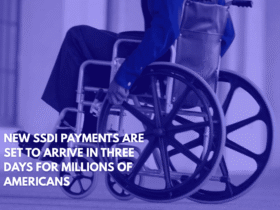In July 2025, the United States Senate passed the One Big Beautiful Bill Act (OBBBA), a major tax reform bill that promised to remove federal taxes on Social Security benefits. At first glance, this looked like good news for many older Americans, especially retirees.
But when we look closely, the reality is more complicated. The new law does not completely cancel taxes on Social Security benefits—it only offers a temporary extra deduction for people aged 65 and older.
This change gives much-needed relief to many seniors. But unfortunately, it leaves out younger people who receive Social Security Disability Insurance (SSDI) benefits. So, does this mean SSDI recipients are left out? Let’s take a closer look.
How Social Security Benefits Are Taxed Today
Right now, up to 85% of Social Security benefits can be taxed if your income crosses certain limits. These rules have been in place since the 1980s and haven’t been updated.
The income thresholds are $25,000 for individuals and $32,000 for married couples. To calculate this, the government adds half of your Social Security benefits to your other income like salary, pensions, or investments.
Since these limits haven’t changed in over 40 years, more and more people are ending up paying taxes on their Social Security. The OBBBA was expected to fix this problem completely, but instead, it introduces a temporary extra deduction of $6,000, only for people aged 65 and older. This deduction will be available from 2025 to 2028, and it is added on top of the regular standard deduction.
Who Gets the Most Benefit from This New Deduction?
According to the White House and the Council of Economic Advisers, this new deduction will help around 88% of seniors pay zero federal tax on their Social Security.
For example, if a single person receives about $24,000 per year from Social Security, this new deduction will lower their total taxable income so much that they won’t owe any tax at all.
But there’s a catch—only seniors aged 65 and older can use this extra deduction. If you’re under 65 and receiving SSDI, you don’t get any benefit from this change.
You still have to pay taxes if your income is above the usual limits. This has disappointed many people who rely on SSDI as their main source of income before retirement age.
Why SSDI Recipients Under 65 Are Left Behind
SSDI helps people who cannot work due to a serious and long-term disability. These individuals may have worked earlier and paid Social Security taxes, but now they depend on SSDI payments to survive. Still, if they are under 65, they don’t get the $6,000 deduction. Their benefits are taxed under the old rules.
This age-based rule has raised many concerns. Critics say that the bill unfairly ignores millions of people who are disabled and financially struggling.
These are people who need help the most, but the OBBBA does not support them equally. Disability groups and some lawmakers are now calling for changes to include all SSDI recipients, not just those above 65.
What This Means for the Future of Social Security
While many older retirees will save money on taxes, some experts are worried about the future. The Committee for a Responsible Federal Budget (CRFB) has warned that reducing taxes on Social Security could lead to financial trouble. They estimate the government will lose around $100 billion in tax revenue in 2025 alone.
This could make the Social Security and Medicare trust funds run out of money faster. Right now, Social Security is expected to become insolvent by 2033, but the new changes might push that date to 2032.
If that happens, benefits might be cut by 24% unless Congress acts. Also, since the extra deduction is only temporary (until 2028), it brings more uncertainty for people planning their retirement.
So while the new bill brings real relief to seniors above 65, it still leaves out many disabled people and doesn’t solve long-term problems with Social Security’s funding. It’s a short-term win, but the bigger challenges remain.
What Is the Maximum SSDI Benefit in 2025?
SSDI is different from SSI (Supplemental Security Income). SSDI is not based on your financial need, but on your past work history. You qualify if you have paid Social Security taxes and are now unable to work because of a serious disability.
In 2025, the maximum SSDI benefit is $4,018 per month. But very few people get the maximum. The average SSDI payment is around $1,580 per month, and most people receive an amount close to this average. The actual payment depends on how much you earned while working and how much Social Security tax you paid.











Leave a Reply